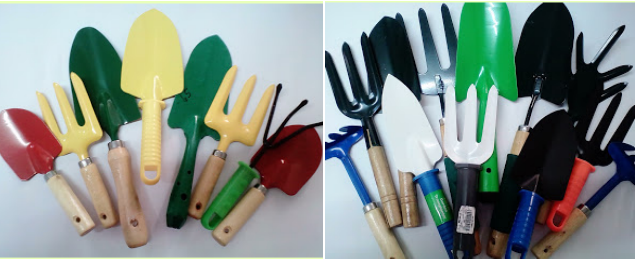MANILA, Philippines – A non-profit environmental and health group has warned school authorities and parents against the use of gardening tools that are coated with lead-containing paints.
Ecowaste Coalition aired the warning following the detection of high concentrations of lead, a potent neurotoxin, in eight of 20 samples of gardening tools that the group purchased for P20 to P65 each from general merchandise stores, hardware centers, and sidewalk vendors in Monumento, Caloocan City, Divisoria, Manila City, and in Makati City and Pasay City.
Ecowaste analyzed the gardening tools, including hand shovels, rakes, forks and cultivators, as part of its “Toxic-Free Back-to-School” drive.
“We found excessive lead paint levels on some of these gardening tools that are often used in school gardening activities,” said Thony Dizon, EcoWaste’s Project Protect coordinator.
Ecowaste said that of the 20 gardening tools, eight were found to be with paints containing dangerous concentrations of lead up to 20,400 parts per million, way above the 90 ppm total lead content limit under the DENR A.O. 2013-24, or the Chemical Control Order for Lead and Lead Compounds.
“We are concerned that the lead coated gardening tools will deteriorate and rust with frequent use. This will cause the paint to peel and for its lead content to contaminate the soil,” said Dizon.
“A child can be exposed to lead if the lead-contaminated soil gets into his hands and mouth while gardening or playing in the dirt,” he said.
According to the World Health Organization (WHO), “young children are particularly vulnerable because they absorb 4–5 times as much ingested lead as adults from a given source.”
“Moreover, children’s innate curiosity and their age-appropriate hand-to-mouth behavior result in their mouthing and swallowing lead-containing or lead-coated objects, such as contaminated soil or dust and flakes from decaying lead-containing paint,” the WHO explained.
“Undernourished children are more susceptible to lead because their bodies absorb more lead if other nutrients, such as calcium, are lacking. Children at highest risk are the very young (including the developing fetus) and the impoverished,” the WHO.
“Lead affects children’s brain development resulting in reduced intelligence quotient (IQ), behavioural changes such as reduced attention span and increased antisocial behavior, and reduced educational attainment,” the WHO stressed.










